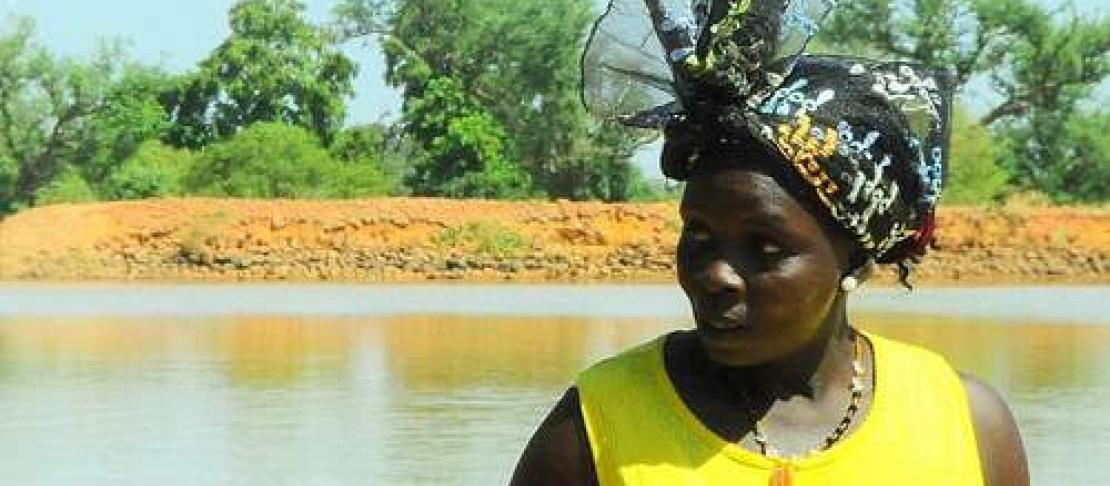Ninigui: A war against… erosion and desertification. - Part IV: Helene’s vegetable farm

“Twenty years ago, famine reigned our area”, says Helene. “The men went off to Côte d’Ivoire, Mali, Togo and all countries around us. They farmed other people’s lands. But we, the women, we could not move. We had to raise the children. And it was hard.”
“You know, for a farmer, the crop is everything. As the weather changed, as the erosion took our soil away, we were left with infertile land. Whatever small crops we could still harvest, was not enough for our kids. They got sick, many died. Those were very hard times.”
Adama, the chairman from the farmers’ union, had told us how the village succeeded in constructing a dam. “That was good as a drinking hole for the cattle”, Helene explains, “but I realized we could do more with it, and thought about growing vegetables during the dry season. We never did that, I had no experience, but I wanted to give it a try. If you don’t try, you won’t learn, in my opinion.”
Indeed, the farmers in Ninigui, used to be idling during the dry season. “Once the harvest finished, everyone, young and old, sat in the shade of the trees, until the new planting season. So we thought of using the water from the dam to make plots with small vegetable farms so we could grow vegetables all year round, and not depend on the single crop from the rainy season.”
 The village allocated several small plots for Helene and her group of entrepreneurial women, to try out vegetable farming. “It took me about five years before I had a significant yield”, she smiles, “But once I found out the basic techniques, it took off really fast. Now we have over one hundred men and women working in the lowlands around the dam. So now, in the dry season, everyone is busy. Some tend to the vegetable gardens, some harvest them, others go to the market and sell them.”
The village allocated several small plots for Helene and her group of entrepreneurial women, to try out vegetable farming. “It took me about five years before I had a significant yield”, she smiles, “But once I found out the basic techniques, it took off really fast. Now we have over one hundred men and women working in the lowlands around the dam. So now, in the dry season, everyone is busy. Some tend to the vegetable gardens, some harvest them, others go to the market and sell them.”
“For everyone starting a vegetable garden, my advice is: try it out! Vegetables will diversify your food basket, but will also allow you to create a second harvest, during the dry season. It is not difficult to get a vegetable crop. The only thing you need is water.”
As water was critical, Helene had a water hole dug on her vegetable plot. “But it was not sufficient, so I dug another one, and yet another one. As my vegetable farm grew, I took a microfinance loan and bought a small motor pump. It takes the water from the dam, fifty meters further and pumps the water to my plot. I share the water with other women on the neighbouring plots. They chip in to cover the gas and the maintenance of the pump.”
On her small plot of one hectare, Helene harvests 70 tins of onions per season. Each tin is about 20 kgs. “And with 25 kgs of potato seeds, I get about 600 to 700 kgs of potatoes. But I also do peppers, and cabbage.”
Asked about her future plans, Helene gives me a wide smile, and a fire glows in her eyes: “I don’t want to sit still. I want to experiment with vegetables uncommon to the people in this region: bell peppers, courgettes, cucumbers,…. I want to grow them, and see if I can create a market for them, that’s my next project.”
The way ahead for researchers and smallholder farmers facing current and coming challenges posed by climate change lies in learning from each other while sharing knowledge and experiences.
Photos in this article by Peter Casier.


